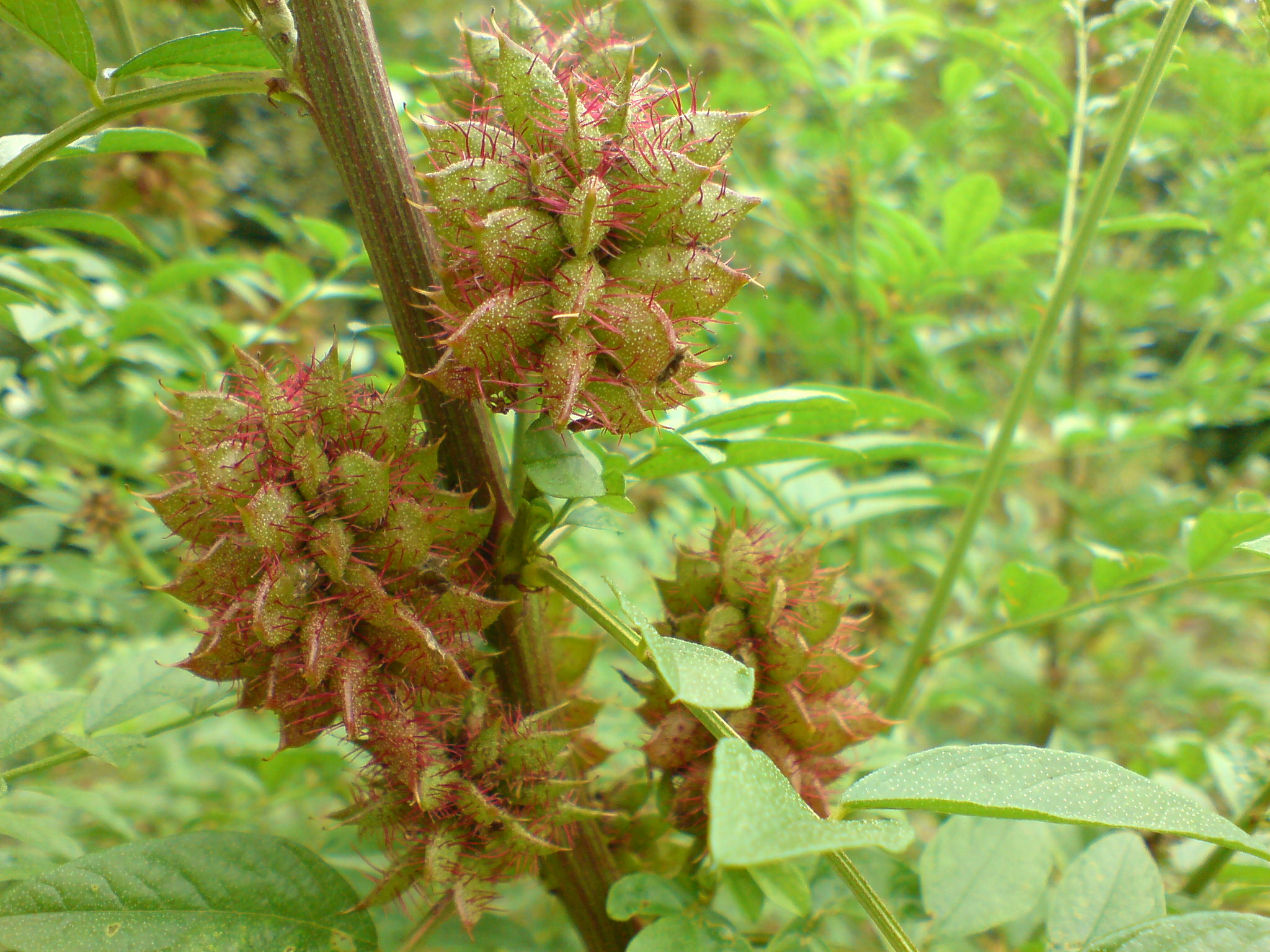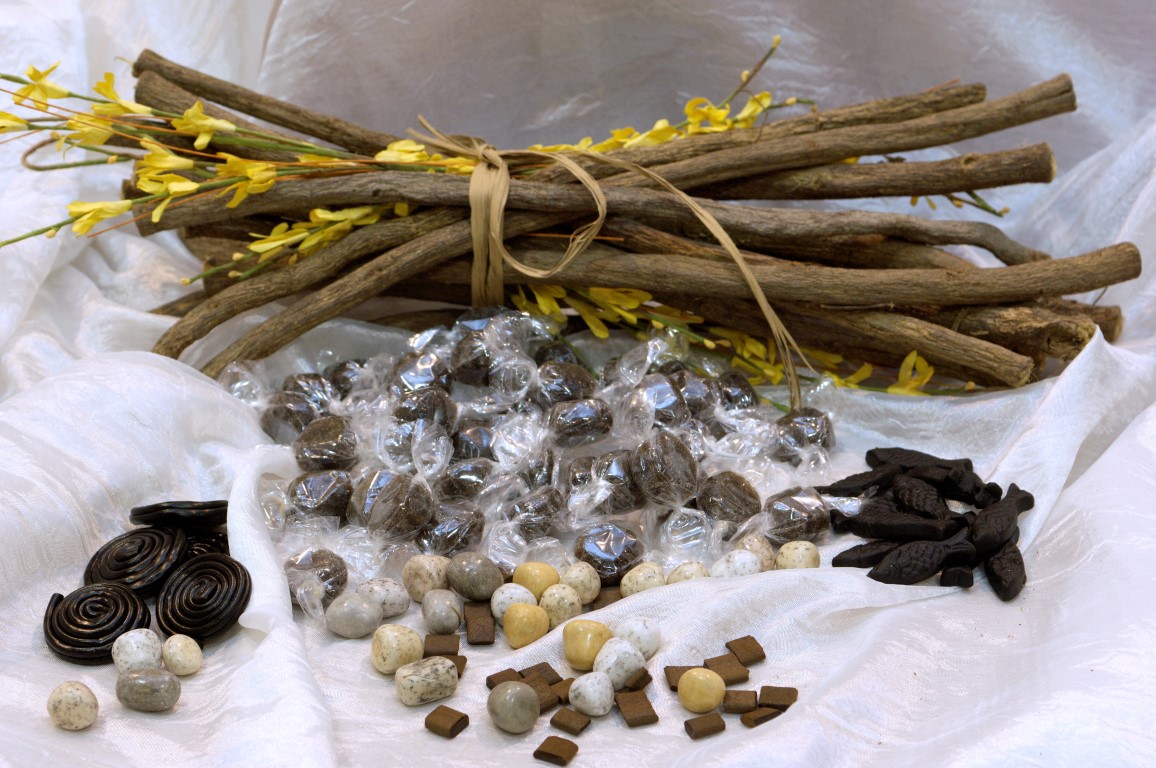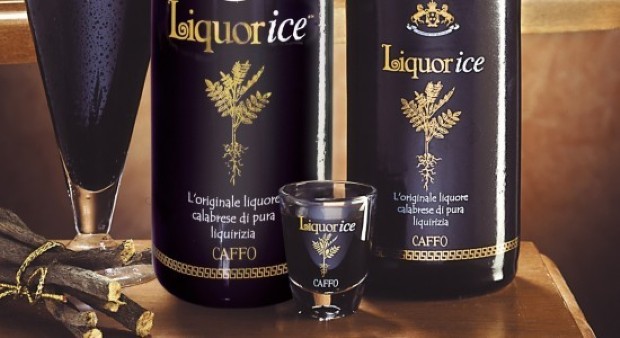
Liquirizia/liquorice
This post is also available in:
 Italiano (Italian)
Italiano (Italian)
Liquorice (Glycyrrhiza glabra) is an everlasting herbaceous plant, which becomes also a meter high and belongs to the Fabaceae family. Its roots and stolons of 3-4 years, also 2 meters long, cropped during autumn for then being dried and boiled.
It hails from south-west Asia and from the Mediterranean area. It grows in calcareous and clayish soils. It was considered an important plant in ancient Egypt, Assyria, China it was present in ancient Greek medicine and it has been used for 5,000 years to cure liver diseases and food poisonings. It was introduced by friars in Europe in 1400 and its juice started being extracted only in 1700, which has a sweeting power 50 times superior to the one of sugar.
There are many uses of liquorices from the sweet “radice succhiata” to the extraction of juice to produce candies and spice certain types of dark beer. It is also used to produce elixirs and liqueurs and for the tanning of tobacco. The variety of liquorice (Glycyrrhiza glabra var. ‘Cordara’) grows along the Calabrian coast, since it is favoured by the environmental conditions and by the soils. It is known for its sweet taste and intense scent.
Liquorice Caffo
The historic distillery Caffo invented in the middle nineties the first Liquorice, the first liqueur made with pure Calabrian liquorice. This plant was considered before only as an ingredient to use together with other products (anise, mint, various aromatic and bitter herbs).
Caffo distinguishes itself non only for the use of the local variety of liquorice, which is sweeter, but also for the natural manufacturing process , which does not alter the organoleptic characteristics of the juice, even though it implies modern technologies: the extraction of the juice starts from the roots, which are finely sheared through and grinded. Then they are infused in hot water without adding solvents or chemical additives.
Caffo Distillery
It was founded by Giuseppe Caffo, Master Distiller, in the last decade of the 19th century on the slopes of Etna in Sicily. The Caffo distillery produced at the beginning principally spirits, alcohol and products derived from the production of wine, but it started introducing gradually in the Italian market certain types of liqueur obtained by ancient recipes found thanks to meticulous researches and rielaborations.
After that it was transformed into a society “Fratelli Caffo – Distillerie di alcole, brandy e tartarici”, and it gained a factory in Calabria in Limbadi, a place which was renowned at the time for its red wine. The presence of a distillery in an area where wine production was highly spread allowed them to have great quantities of raw materials to distill on the spot, like fresh pomaces and wines, and to have few competitors than in Sicily.
The firm bought a distillery in 2006 in the province of Udine (Friuli), specialised in the manufacturing of high-quality grappa.
In addition, another factory was created “Liquirizia Caffo” in Vibo Valentia, in Calabria, which is specialised in the production of pure Calabrian liquorice with the marks Caffo and Taitù, and other extracts of aromatic plants, which are mainly cultivated in the farm Feudo Montalti, in Limbadi, which not far from the distillery . Also, two varieties of grapes are cultivated here, Sangiovese di Calabria and Gaglioppo, with which it is possible to obtain a well-known Calabrian red wine, according to the ancient local wine tradition.
This post is also available in:
 Italiano (Italian)
Italiano (Italian)
Contatti
Cosenza()


